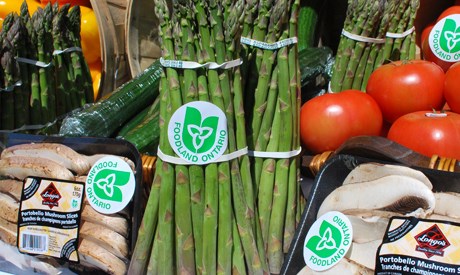I stopped in my tracks this week when I heard food prices actually dropped last year. It was nonsensical…how could an essential such as food be going down in price, with the cost of living marching forward, housing prices soaring and energy costs through the roof?
“It’s true,” says Prof. Mike von Massow, a University of Guelph agriculture and food economics researcher. “The price of food actually came down in the past year.”
The Statistics Canada Consumer Price Index -- the industry standard for such measures – shows that overall, food prices dropped a little over two per cent from last January to this January.
In perspective, that’s not much -- two cents on the dollar, $2 on a $100 grocery bill.
Nonetheless, it’s intriguing.
"People notice extremes, and most of us won’t really notice this two per cent drop because our bills vary more than that from week to week,” says Von Massow. “But still, for consumers, it’s better than prices going up.”
Leading the lower-price pack was fresh fruit and vegetables, which dropped 10-15 per cent through the year. That was mainly thanks to a more favourable exchange rate with the US, and rains that returned to California relative to a year ago. When the nagging drought there started to ease off -- before those rains became floods -- California farmers could once again become productive, and send winter produce north.
About 80 per cent of the produce we get here in the winter comes from California. When that source is unavailable, or specific local weather problems lead to short-term shortages, we end up with the likes of $8 cauliflower, which dominated food headlines a year or so ago.
Less dramatic, but still noteworthy, is the lower cost of fresh and frozen meat, other than poultry (which actually increased marginally). After a very tight supply in 2015 of beef and, to a lesser extent, pork, herds grew and the pressure came off prices.
However, when beef prices were high, many consumers switched to alternatives such as chicken.
So in the grocery cart, lower prices for beef might end up balancing themselves out with higher chicken prices.
On the other side of the ledger, the price of fish was up four per cent. It’s a supply and demand question, says Von Massow. As part of the drive towards sustainability, consumers are switching their preferences from wild-sourced fish to cultured fish. Demand is up across Canada. In fact, more than half of the fish now sold in grocery stores in the country is farmed. In Ontario, aquaculture is the fastest growing segment in agri-food production, but supply is still trailing demand.
Von Massow says traditionally, the least variable food commodities price-wise are those whose supplies are managed through legislation, such as chicken and dairy. Last year, milk and cheese prices dropped 1.6 per cent. Some grocery stores used them as what are called loss leaders, low-priced or sale items that the store may sell for a loss to attract consumers.
It’s reasonable to expect this trend to continue, as food retailer competition keeps intensifying and now further expanding in places such as drug stores and corner stories, some of which are offering a huge array of food products.
Restaurants are also a part of the picture; rising or falling food prices affect them too, and increasingly so. In Canada, in the last five years, the percentage of the food dollar spent in restaurants has climbed to 35-40 per cent.
Van Massow says it’s unlikely to see prices fall in restaurants, though. They make adjustments or absorb higher costs when that’s the way food is trending – which it usually is -- and having done so, aren’t expected to reduce their prices now that food overall is down two per cent.
Going forward, Von Massow is working with the Guelph Food Institute as the lead author on a report on food trends in 2017. It will be released this month, and discussed here.
